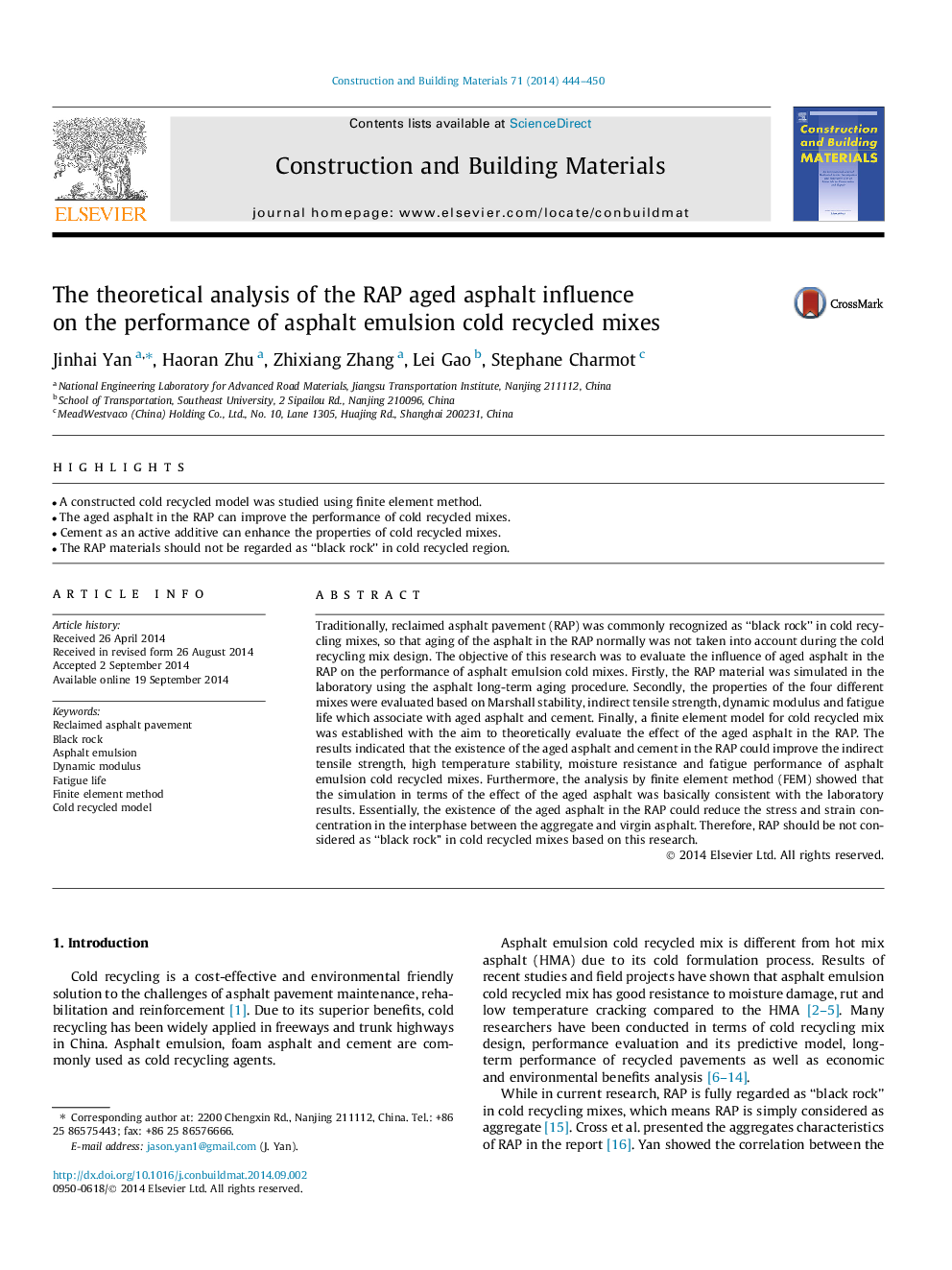| Article ID | Journal | Published Year | Pages | File Type |
|---|---|---|---|---|
| 257306 | Construction and Building Materials | 2014 | 7 Pages |
•A constructed cold recycled model was studied using finite element method.•The aged asphalt in the RAP can improve the performance of cold recycled mixes.•Cement as an active additive can enhance the properties of cold recycled mixes.•The RAP materials should not be regarded as “black rock” in cold recycled region.
Traditionally, reclaimed asphalt pavement (RAP) was commonly recognized as “black rock” in cold recycling mixes, so that aging of the asphalt in the RAP normally was not taken into account during the cold recycling mix design. The objective of this research was to evaluate the influence of aged asphalt in the RAP on the performance of asphalt emulsion cold mixes. Firstly, the RAP material was simulated in the laboratory using the asphalt long-term aging procedure. Secondly, the properties of the four different mixes were evaluated based on Marshall stability, indirect tensile strength, dynamic modulus and fatigue life which associate with aged asphalt and cement. Finally, a finite element model for cold recycled mix was established with the aim to theoretically evaluate the effect of the aged asphalt in the RAP. The results indicated that the existence of the aged asphalt and cement in the RAP could improve the indirect tensile strength, high temperature stability, moisture resistance and fatigue performance of asphalt emulsion cold recycled mixes. Furthermore, the analysis by finite element method (FEM) showed that the simulation in terms of the effect of the aged asphalt was basically consistent with the laboratory results. Essentially, the existence of the aged asphalt in the RAP could reduce the stress and strain concentration in the interphase between the aggregate and virgin asphalt. Therefore, RAP should be not considered as “black rock” in cold recycled mixes based on this research.
